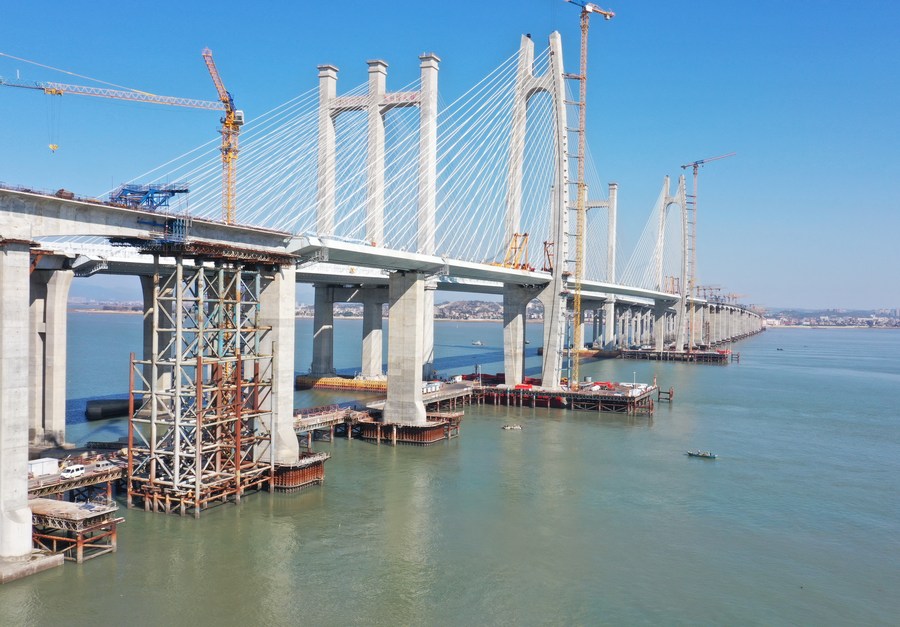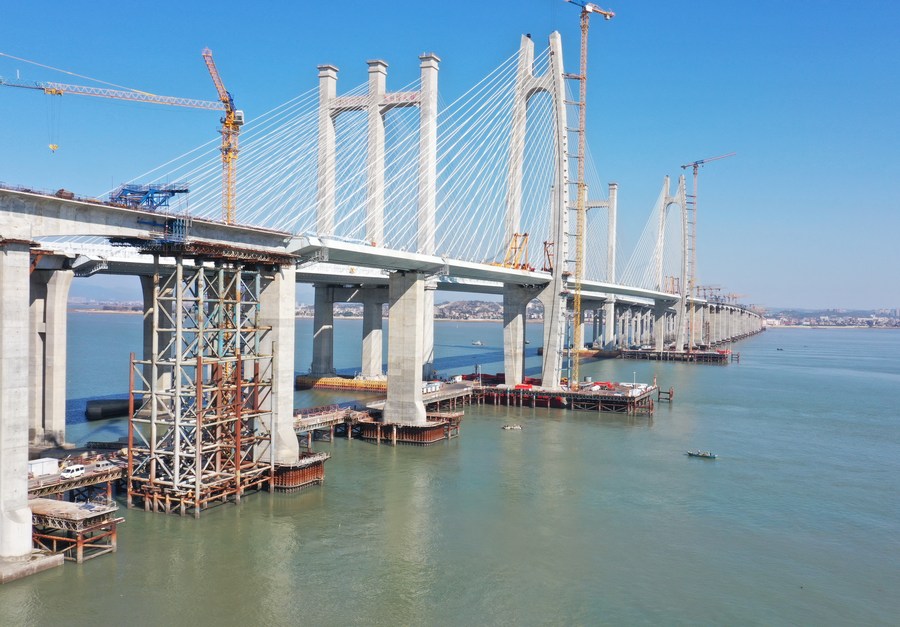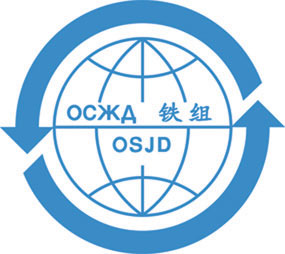The 1000-ton “Kunlun” bridgelayer for the construction of the Fuzhou-Xiamen trans-sea high-speed line (according to the Xinhua News Agency)



The construction of the Fuzhou-Xiamen high-speed trans-sea railway line (HSR) is in full swing in China. With an estimated speed of 350 km/h and a total length of more than 277 km, this high-speed railway line is the China’s first trans-sea HSR and the fastest trans-sea HSR in the world. The construction of high-speed railway lines at sea is associated with the use of a number of the most advanced technologies, especially in the construction of bridges and viaducts.
The Fuzhou-Xiamen HSR crosses three bays in succession: Meizhou, Quanzhou and Anhai. When laying the line, it is planned to build 84 bridges, therefore it received the name “Museum of Bridges” in China. During the construction of one of the key facilities of the high-speed railway - the bridge across the Meizhou Bay (the total length of the structure is 20.29 km, while the length of its marine part is 8.96 km), the world’s first 1000-ton bridgelayer “Kunlun” was used, which has been specifically designed to be used in the construction of high-speed railway lines at sea. Its developer and manufacturer is the China Railway Construction Corporation CRCC.
During the construction works of the bridge over the Meizhou Bay, in order to increase the efficiency of work, the following technology was used: the supports (columns) are installed first, and then a 40-metre superstructure (box beam) weighing 1000 tons is laid between the supports using the Kunlun bridgelayer.
The bridgelayer got its name in honour of one of the largest mountain systems of the Asian continent, Kunlun, located in China.
Its creation was facilitated by the progressive increase in the requirements and standards for the construction of viaducts and overpasses on high-speed railway lines, in accordance with which the high-speed lines are usually laid in China.
This technology makes it possible not only to avoid the restrictions caused by difficult terrain, but also to reduce the need for land allotments, thereby facilitating legal support during the laying of high-speed railway lines and increasing the traffic safety.
The bridgelayers as special equipment are used for the construction of viaducts, overpasses and bridges. Prior to the construction of the bridge over the Meizhou Bay, most of the viaducts, trestle bridges and bridges of the Chinese high-speed railway line used span structures of 32 metres long and weighing about 900 tons. Accordingly, the maximum load capacity of the bridgelayers used for the installation was only 900 tons. However, speeds on China’s high-speed railways continue to rise and are to exceed 350 km/h in the future and even reach 400 km/h in the foreseeable future.
To reduce the resonance frequency at the joint, the span length is increased from 32 metres to 40 metres. Thus, the 40-metre span structures used in the construction of the bridge over the Meizhou Bay can reduce their number by 6 per 1 kilometre, thereby reducing the required land area by 20 % and reducing the costs by 15 % with a significant reduction in the construction time.
Increasing the length of the span to 40 metres or more contributes not only to faster and more efficient construction, but also reduces harmful emissions into the environment. In the future, 40-metre superstructures shall become one of the building standards for the construction of viaducts, overpasses and bridges on the high-speed railways in China.
The weight of the 40-metre superstructure is 1000 tons, which is equivalent to the weight of three Airbus A380 aircraft. At the same time, China’s high-speed railway network is gradually covering mountainous areas in the western part of the country, where the construction conditions are more difficult. This requires not only an increased carrying capacity of the bridgelayers, but also necessitates a need for the bridgelayers to be able to move and work in tunnels. The section of the tunnels for the movement of the Chinese trains at a speed of 350 km/h is an arcuate circle with a width of 14.7 metres and a height of 12.2 metres. The Chinese bridgelayers, which preceded the creation of the “Kunlun” and are capable of assembling the bridge superstructures weighing 900 tons, have a width of 18.5 m and a height of 13.1 m. With such dimensions, their movement and work in tunnels become impossible.
In this regard, it became necessary to increase the carrying capacity of the bridgelayers while reducing their size. But how to solve this problem?
The developers decided to abandon the ‘portal’ or frame structure of conventional bridgelayers. After constant modifications and testing, the new Kunlun bridgelayer was developed: it looks like a long rocket carrier, equipped with two undercarriages at its ends, which are connected by a giant steel beam of 104 metres long. The “Kunlun” bridgelayer consists of more than 15,000 parts, has a total length of 116 metres, a height of 9.2 metres and a width of 7.9 metres. For the manufacture of “Kunlun”, a new grade of special steel is used – high-strength alloy steel of the GT785 grade. With the same mass of steel sheet used as the base material in the “Kunlun” bridgelayer, its strength is 70 % higher than that of the conventional steel sheet.
The construction of viaducts or bridges usually requires the combined work of several types of heavy equipment, such as hoists and conveyors of beams and superstructures, gantry cranes and bridgelayers. And “Kunlun” integrates lifting, transporting and laying functions, which makes it possible to use it both in the construction of a trans-sea railway and in laying railway lines in mountainous areas. In addition, “Kunlun” can lay superstructures with three different sizes: 24 metres, 32 metres and 40 metres.
All these advantages of “Kunlun” have made it possible to reduce the costs by almost half as compared to the traditional bridgelayers, which rightfully earned him the nickname “universal” among specialists.
In order to ensure the safety of “Kunlun” when driving and turning, an automatic deviation correction system has been developed, which can automatically correct the direction of the wheelsets during movement, thus greatly simplifying the driver’s work.
In addition to automatic deviation correction, “Kunlun” also has a BeiDou navigation system (BDS) and a realtime monitoring system. With the help of intelligent control systems, “Kunlun” can reach speeds of up to 40 km/h on the narrow trackway of the bridge.
The use of this bridgelayer and the application of a number of advanced technologies can significantly increase the efficiency of the construction of the Fuzhou- Xiamen trans-sea high-speed railway line, which is scheduled to be put into operation in 2023.
